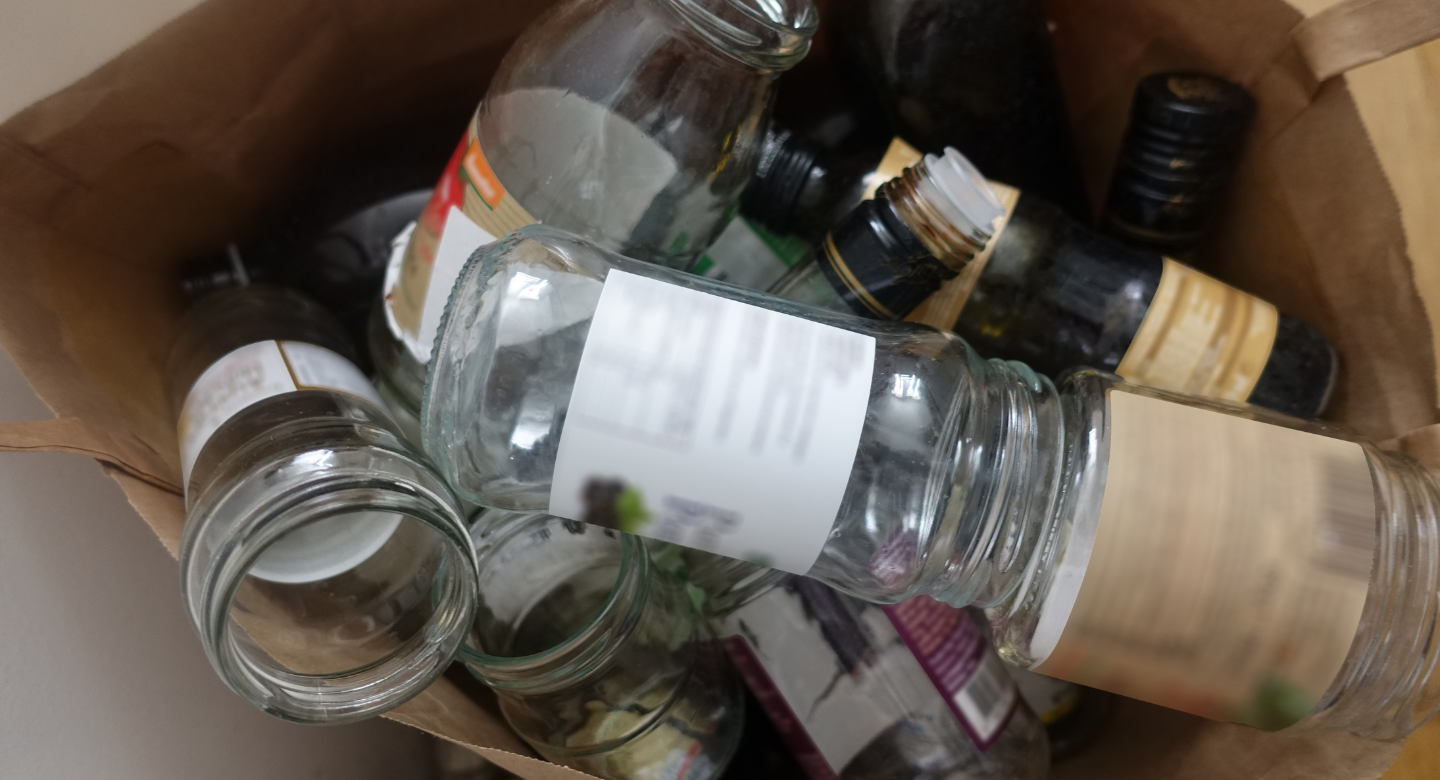3Rs of Sustainability for Glass Jars
The 3Rs of Sustainability for Glass Jars—Reduce, Reuse, Recycle—provide a comprehensive framework for travelers to transform simple glass containers into powerful tools for sustainable tourism. By embracing these principles, travelers can significantly decrease their environmental footprint while discovering new ways to engage with local cultures, preserve memories, and create meaningful connections with destinations worldwide.
Table of Contents
ToggleIn an era where environmental consciousness drives many travel decisions, eco-minded explorers are seeking innovative ways to minimize their impact while maximizing their experiences. Among the most versatile and sustainable travel companions are glass jars—humble containers that offer remarkable potential for reducing waste, supporting local economies, and enhancing travel experiences through mindful consumption practices.
Why Glass Jar Sustainability Matters in Travel and Tourism

The travel industry generates enormous amounts of packaging waste through single-use containers for beverages, snacks, and souvenirs—plastic bottles, aluminum cans, and disposable food packaging that accumulate at tourist destinations and threaten local ecosystems. Glass jars offer a sustainable alternative that addresses multiple environmental challenges while providing practical benefits for conscious travelers seeking authentic experiences.
Glass containers excel in sustainability because they’re infinitely recyclable without quality degradation, completely inert and non-toxic, and naturally preserve food freshness without chemical interactions. The 3Rs of Sustainability for Glass Jars represent a simple yet powerful approach to reducing tourism’s environmental impact while enhancing the quality and authenticity of travel experiences through mindful consumption and creative reuse.
How Sustainable Travel Helps
Embracing the 3Rs of Sustainability for Glass Jars contributes to environmental protection through multiple pathways. Each traveler who carries and reuses glass containers prevents numerous single-use packages from entering waste streams at tourism destinations, reducing pollution in sensitive ecosystems and diminishing the burden on local waste management systems that often struggle with tourism-generated refuse.
Beyond direct waste reduction, sustainable glass jar practices support local economies when travelers purchase locally-made products to fill their containers, reduce transportation emissions associated with pre-packaged goods, and create opportunities for authentic cultural exchanges with local producers and vendors. These practices help preserve destination integrity while demonstrating how individual choices can collectively generate significant positive environmental impact.
How to Travel Sustainably with Glass Jars
Implementing the 3Rs of Sustainability for Glass Jars begins with thoughtful preparation and selection of appropriate containers for your journey. Choose lightweight, durable glass jars with secure lids in various sizes to accommodate different needs—small jars for spices and condiments, medium jars for snacks and beverages, and larger jars for bulk purchases or meal storage. Mason jars, preserving jars, and specially designed travel containers work particularly well for most applications.
During your travels, use glass jars for purchasing local products in bulk, storing homemade snacks, carrying beverages without disposable cups, and preserving perishable items longer than plastic alternatives would allow. Many sustainable travelers also use glass jars for collecting natural souvenirs like sand, shells, or pressed flowers, creating meaningful keepsakes while avoiding commercial souvenirs with excessive packaging or questionable environmental credentials.
The Role of the 3Rs in Glass Jar Sustainability
1. Reduce: Minimizing Packaging Waste

The first principle in the 3Rs of Sustainability for Glass Jars focuses on reducing consumption of single-use packaging by utilizing reusable glass containers for various travel needs. Travelers can significantly decrease their packaging footprint by using glass jars to purchase bulk items from local markets, refilling beverages instead of buying bottled drinks, and storing homemade snacks rather than purchasing pre-packaged options wrapped in plastic.
This reduction strategy extends beyond personal consumption to influence local businesses and fellow travelers. When tourists consistently choose bulk purchases and reusable containers, they signal market demand for sustainable options, encouraging vendors to offer more environmentally friendly alternatives. Many travelers report that bringing glass jars to local markets creates opportunities for conversations about sustainability while supporting vendors who appreciate customers making environmentally conscious choices.
2. Reuse: Creative Applications for Glass Jars
The second component of the 3Rs of Sustainability for Glass Jars leverages the incredible versatility of glass containers, which can serve multiple purposes throughout a journey and long after returning home. Beyond their primary function as food and beverage containers, glass jars excel as storage for travel documents, emergency supplies, craft materials, and personal care items that might otherwise require separate packaging.
Travelers have discovered numerous creative applications for glass jars: portable herb gardens using local seeds, lanterns with battery-powered LED lights, photography equipment protection, and even temporary terrariums for documenting local plant life. These reuse applications extend the functional life of glass containers while reducing the need for specialized travel gear that might otherwise be purchased, used briefly, and discarded.
3. Recycle: Ensuring Proper End-of-Life Management
When glass jars eventually reach the end of their useful life—which may take years given their durability—the final principle in the 3Rs of Sustainability for Glass Jars ensures these materials re-enter the production cycle efficiently. Glass is infinitely recyclable without quality degradation, meaning the jar you use today could be recycled into new containers, decorative items, or even building materials countless times throughout its material lifecycle.
The recycling process for glass is highly efficient when containers are properly sorted and cleaned, with most destinations worldwide accepting glass containers in standard recycling programs. However, travelers should research local recycling protocols, as some locations have specific requirements for glass color separation or preparation procedures that ensure optimal recycling efficiency.
Sustainable Glass Jar Production Practices
Manufacturers are increasingly aligning their production processes with the 3Rs of Sustainability for Glass Jars through various environmental innovations. These include utilizing recycled glass cullet as raw material (which reduces energy requirements by up to 30%), implementing energy-efficient melting processes, and designing products specifically for longevity and multiple lifecycle applications.
Leading glass manufacturers now offer detailed environmental impact information, including carbon footprint calculations, water usage data, and energy consumption metrics that help conscious consumers make informed purchasing decisions. Some producers have achieved carbon neutrality through renewable energy usage and offset programs, while others focus on local sourcing and distribution to minimize transportation-related emissions.
Regulatory Insights & Glass Container Standards in India

India has developed comprehensive frameworks supporting the 3Rs of Sustainability for Glass Jars through various regulatory initiatives and quality standards. The Bureau of Indian Standards has established specifications for glass containers that ensure safety, durability, and recyclability, while the country’s plastic waste management regulations have created favorable conditions for glass alternatives in packaging applications.
The Indian government’s emphasis on traditional preservation methods and local craftsmanship has supported artisanal glass production, creating opportunities for travelers to purchase locally-made containers that embody cultural heritage while supporting sustainable practices. Additionally, India’s growing network of glass recycling facilities and waste management cooperatives provides infrastructure that supports the complete lifecycle approach essential to the 3Rs framework.
Carbon Footprint Analysis of Glass Jars
Understanding the environmental impact of glass containers reinforces the value of the 3Rs of Sustainability for Glass Jars when properly implemented. While glass production requires significant energy input initially, this environmental investment is amortized over numerous uses and recyclability cycles. Research indicates that glass containers need to be reused approximately 15-20 times to achieve lower environmental impact than single-use plastic alternatives.
The carbon footprint of glass jars decreases substantially when manufactured from recycled materials, which require significantly less energy than production from raw materials. When considering the complete lifecycle—including infinite recyclability and absence of toxic leaching—glass containers demonstrate superior environmental performance compared to plastic alternatives, particularly for travelers who can commit to consistent reuse over extended periods.
Case Studies & Real-World Impact
The 3Rs of Sustainability for Glass Jars have inspired innovative programs worldwide that demonstrate their practical benefits for sustainable tourism. The “Zero Waste Travel” initiative in Costa Rica provides glass container kits to eco-tourists, enabling them to purchase local products without packaging waste while supporting small-scale producers who offer bulk sales to environmentally conscious visitors.
Several adventure travel companies have integrated glass jar use into their itineraries, teaching travelers to preserve local foods, create natural dye collections, and document their journeys through pressed flower arrangements in glass containers. These programs demonstrate how implementing glass jar sustainability principles can enhance rather than complicate travel experiences while providing tangible environmental benefits.
Actionable Steps for Travelers
Make the 3Rs of Sustainability for Glass Jars part of your travel routine with these practical strategies: pack a selection of glass jars in various sizes within protective padding, research local bulk purchasing opportunities before traveling, and practice explaining your sustainable practices in local languages to facilitate market interactions. Learn proper cleaning techniques for situations with limited facilities, and identify glass recycling locations at your destinations.
Support local businesses that accommodate customers bringing their own containers, and consider purchasing locally-made glass products as meaningful souvenirs that can continue serving practical purposes long after your journey ends. Share your sustainable glass jar practices on social media to normalize these behaviors among fellow travelers, and consider organizing bulk purchasing groups with other conscious travelers to maximize environmental impact.
The Future of Glass Jar Sustainability
As sustainable tourism continues evolving, implementing the 3Rs of Sustainability for Glass Jars will play an increasingly vital role in preserving destinations while enhancing authentic travel experiences. The Reduce, Reuse, Recycle framework offers travelers a practical approach to minimizing waste while discovering new ways to engage meaningfully with local cultures and environments.
The future of sustainable travel depends on simple yet transformative choices like carrying reusable glass containers instead of accepting disposable packaging. When millions of travelers embrace the 3Rs of Sustainability for Glass Jars, the collective impact becomes profound—less plastic waste in pristine environments, stronger support for local producers, and more authentic cultural exchanges built around sustainable practices. By making glass jars part of our travel toolkit, we ensure that the destinations we love remain beautiful and culturally vibrant for generations of future explorers.
Explore More Blog
3Rs of Sustainability for Plastic Bottles
3Rs of Sustainability for Plastic Cutlery
3Rs of Sustainability for Glass Bottles
Frequently Asked Question (FAQs) on 3Rs of Sustainability for Glass Jars
What are the 3Rs of Sustainability for Glass Jars?
The 3Rs are Reduce, Reuse, and Recycle. Reduce means buying fewer new glass jars by choosing bulk products and larger containers. Reuse involves repurposing jars for storage, crafts, or food preservation. Recycle ensures old jars are properly processed into new glass products through recycling programs.
Why is glass jar sustainability important for travelers and everyday consumers?
Glass jars are environmentally friendly because they can be recycled infinitely without quality loss, unlike plastic that degrades over time. For travelers, they provide safe, non-toxic food storage while being durable enough to last decades. This reduces waste at tourist destinations and offers better value than disposable containers.
How can I reduce my consumption of new glass jars?
Buy products in reusable glass containers rather than single-use packaging. Choose larger sizes to minimize packaging per unit. Before purchasing new jars, check if existing containers can serve your needs. Consider borrowing specialty jars for occasional uses like canning instead of buying items you’ll rarely use.
What are the best ways to reuse glass jars creatively?
Use jars for storage (spices, craft supplies, leftovers), home décor (candle holders, vases, terrariums), kitchen applications (canning, fermenting, portion control), and practical uses (seed starting, travel containers). Always clean thoroughly and check for cracks before reusing.
How do I properly recycle glass jars when they can no longer be reused?
Remove all lids, labels, and adhesive residue, then rinse clean. Sort by color if required by your local program. Place in designated recycling bins or take to drop-off centers. Check with your local waste management for specific guidelines, as requirements vary by location.
Can glass jars be recycled indefinitely without quality loss?
Yes, glass can be recycled infinitely without any quality degradation. Unlike plastic or paper that lose quality with each recycling cycle, glass maintains its molecular structure and can be melted down and reformed into new containers identical to those made from virgin materials.
What should travelers know about glass jar sustainability while traveling?
Pack glass jars with protective padding and choose smaller sizes to reduce weight and breakage risk. Empty containers are allowed in carry-on luggage, but filled jars may need to be in checked baggage. Research recycling options at your destination and never leave glass containers in natural environments.
How does the carbon footprint of glass jars compare to other container materials?
Glass production requires significant energy, but using recycled glass reduces energy consumption by 20-30%. While heavier than plastic for shipping, glass becomes more environmentally favorable with each reuse. Glass jars often outperform plastic alternatives when used more than 3-5 times.
Are there any safety considerations when reusing glass jars?
Always inspect jars for cracks or chips before reusing—damaged containers should be recycled. Thoroughly clean and sanitize jars before food storage. Use appropriate canning procedures for preservation. Never use jars that previously held non-food items for food storage without professional cleaning.
How can communities and businesses promote glass jar sustainability?
Communities can establish glass recycling programs, provide clear guidelines, and offer convenient drop-off locations. Businesses can offer discounts for customers bringing their own containers, create jar exchange programs, or partner with local artisans. Educational workshops and economic incentives help promote widespread adoption of glass jar sustainability practices.







